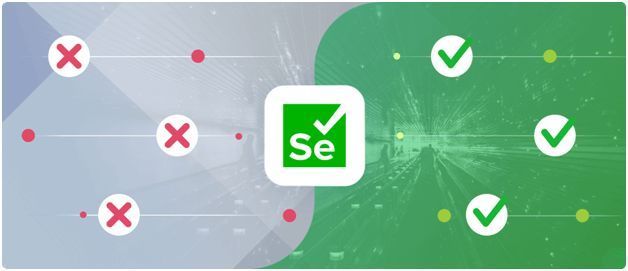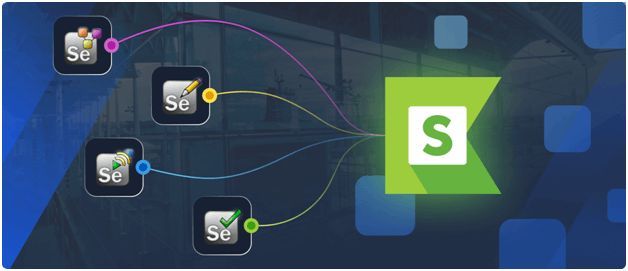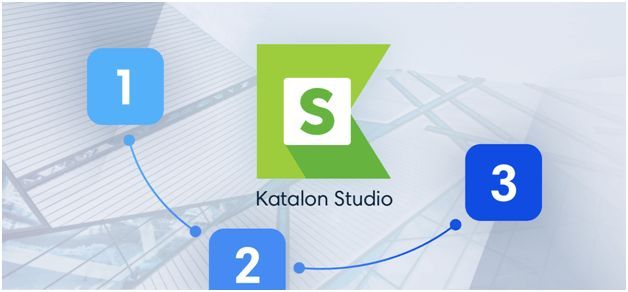In the world of software testing, Selenium is an omnipresent name. Many big-name vendors have made Selenium a native component of their browsers to reap the benefits, including cost-cutting, high speed, and high compatibility. It’s the core technology used from manually writing a script checking how a webpage works to imitating real-user interaction on the webpage.
According to Gartner research, 90% of global enterprises were predicted to be extending test automation to Agile and DevOps. Meanwhile, on the flip side, 50% of them are still struggling with advanced programming skills, efficiency, and resources to succeed with more challenging tasks. Thus, there has been a growing demand for a substitute that solves Selenium’s technical challenges and manages their automated tests more efficiently.
Importance of Selenium in Software Testing

Selenium is primarily an open-source tool used to automate testing across multiple web browsers such as Chrome, Firefox, IE, Safari, and so on. Basically, it consists of four different tools: RC, IDE, Selenium Grid, and WebDriver. What makes this suite highly flexible is the ability to bind to testing on different levels for many business purposes.
The most popular Selenium framework is Selenium WebDriver, which provides an ideal grid for executing automated tests in a vast range of programming languages. Thus, the testing community considers Selenium as an extraordinary innovation since barely alternatives allow users to handle whichever browser from a language of their choice.
Apart from The Above Advantages, Selenium Has Several Shortcomings

- Only web-based applications
One of the top challenges in Selenium automation is that merely web-based application testing is supported. This poses a threat since a large volume of users tend to interact with the application on their mobile devices, sometimes on desktop-based applications. Therefore, Selenium demands various third-party tools to be integrated and configured for mobile, API, and desktop testing.
“Quality at Speed” is a big buzz that lots of people are talking about. This term was specifically geared towards Agile and DevOps environments for the purpose of driving a powerful SDLC, which includes quick time to market and delivering high-quality outputs. That is to say; customers keep on requiring faster and better tool enhancements, they keep on requiring simple setup.
- Demand high programming skill sets
Selenium WebDriver has been renowned for directly calling the ways of multiple browsers with a separate driver for each. However, test automation with Selenium takes plenty of time and effort from configuring test scenarios on those browsers, publishing content from web UI to verifying content from web services.
Although equipped with plenty of programming languages for writing test scripts, Selenium requires a certain level of technical expertise to modify and maintain those scripts. Thus, beginners may see different challenges to develop test scripts across different environments.
- Lack of credible technical support
Making this more challenging, Selenium couldn’t provide prompt and reliable solutions to unexpected issues or custom requests as being open source. Unlike other licensed automation testing tools, the Selenium support is mainly community-based, which means users entirely depend on each other for usage advice and consultation. Hence, professional testers and developers usually complain that they are unable to properly use some of the new features and functionalities.
- Not facilitate AI-driven and image-based testing
Whether you like it or not, AI is already here, and it’s embedded in your life more than you can even imagine. Likewise, AI testing is considered a natural extension to solve complex user behavior over time with image-based testing, AI/ML, and scalability capabilities.
Moreover, website performance, and user experience these days largely depend on images. When testing a website, testers also have to evaluate the image quality, loading speed and resolutions using an appropriate testing tool. Selenium is yet to facilitate AI and image-based testing with given features. Thus, testers are shifting towards other test automation frameworks such as Katalon Studio, Sikuli for visual testing.
Now Migrating Selenium Tests to Katalon Studio Came into Effect

Since the automation testing keeps expanding, Selenium also keeps going on with great successors for the mission of significantly saving time, effort, and easily accessible for all users.
As an example, Katalon Studio came into play to transform the software testing landscape with a complete test automation framework built on top of Selenium and Appium. Since version 7.4.0 release, you can migrate your Selenium tests in either TestNG or JUnit framework to Katalon Studio, obviously without adjusting the code from the ground up. Here was compiled from some advanced features that Katalon Studio can empower Selenium lovers.
- Cross-browser testing across operating systems
Despite being packaged with a rich set of built-in templates, Katalon Studio still has a simple setup. With a relatively simpler learning curve, the tool caters to the need of non-programmers to easily create automation test scripts.
Katalon Studio enables users to automate web, mobile, API, and desktop-based applications across different browsers and operating systems. Users lacking programming skills can get used to the testing functionality with record-and-playback, the AI-driven auto-healing, Smart Wait, and many more features. Meanwhile, highly technical users can work closely with the tool to design higher-level test scripts using hundreds of custom keywords.
In general, Katalon Studio is not only capable of covering a range of testing platforms, but also state-of-the-art algorithms solving sophisticated needs for automation specialists.
- A diversified set of integrations with CI/CD, DevOps and Cloud service tools
DevOps, CI/CD, and cloud-native integrations are taking the world by storm since they play a crucial part in delivering bug-free code at high velocity. Katalon Studio is not an exception. To be specific, CI tools integrated with Katalon, such as Jenkins, Bamboo, CircleCI, or Azure DevOps, can be used to trigger test execution and insightful reports.
Moreover, compared to Selenium, Katalon Studio performs continuous testing in the cloud but still maintains high-quality coverage due to the compatibility with cloud device providers like BrowserStack, SauceLabs, Kobiton, and so on. Consequently, Katalon Studio users have the tool easily fit into a working pipeline without having to modify the organization processes.
- Maximize ROI for scalable teams
Test automation with Katalon Studio can mitigate loss through accuracy, efficiency, and high capacity. When testing efficiencies ensure the release functionality, companies successfully turn consumer confidence into advocacy.
Above all, Katalon TestOps immediately delivers results in efficiency and capacity via visual charts and centralized dashboards after test execution. Therefore, comprehensive business strategies can be attributed to quantifiable metrics in this tool to keep track of ROI throughout the project, consequently creating better functionality for your application.
Test Step Guide to Migrate Selenium Tests

From now on, migrating your current Selenium test scripts to Katalon Studio while keeping extensive features is no longer a problem. Following these steps, your Selenium tests would be ready with Katalon Studio’s codeless algorithms:
- Step 1: Select the Selenium project of your choice to migrate.
Note: You may need to add Java dependencies of your project to .gradle file. Learn more - Step 2: Copy and paste the source code of the selected project to Katalon Studio.
- Step 3: Well-done! Now you can execute and expand your Selenium tests with Katalon.
Read more for the full tutorial and sample project.
Refer to some FAQs below for deeper understanding of this new feature:
1. Can I keep going on with my Selenium scripts after migrating to Katalon Studio, and re-migrate back to Selenium?
Definitely. You can proceed with your Selenium tests after migrating to Katalon by seizing control of flexible capabilities.
If you are a Selenium lover and want further test development in the future, you can re-migrate tests from Katalon Studio back to Selenium without a hitch.
2. Where can I commence with Katalon Studio after the migration?
Katalon Studio does provide a lot of specific tutorials in docs and online resources.
For further custom requests, the Help Center and Katalon community are always available for ticket submission.
3. My team includes both manual/fresh testers and experienced testers, how can we leverage Katalon Studio effectively?
Katalon Studio is scalable for teams despite all sizes and levels, both fresh and experienced testers can easily benefit from the record & playback feature in test automation.
More importantly, higher-level testers could customize their tests via the Scripting Mode with hundreds of custom keywords.
4. Are there on-demand demos to check out how this feature runs my current Selenium tests?
Absolutely! Katalon sales team will introduce you to all available capabilities of Katalon Studio and how our features can contribute to your projects in only 30 minutes.
- Start Your API Testing Project with Katalon Studio
- Creating test cases using Record and Playback
- Creating test cases using Script Mode in Katalon Studio
- Creating test cases using Manual Mode
- Katalon Studio 7: A Glance Over Top 7 Advanced Features
- Start your Desktop Apps Testing with Katalon Records feature
- How Katalon Smart Wait feature can handle web loading issues?
- Why Can Codeless Testing Tools Overcome the Barriers of Test Automation in 2020?
- Installation of TestNG in Eclipse – Selenium WebDriver Tutorial
- How to handle Cookies in Selenium WebDriver
